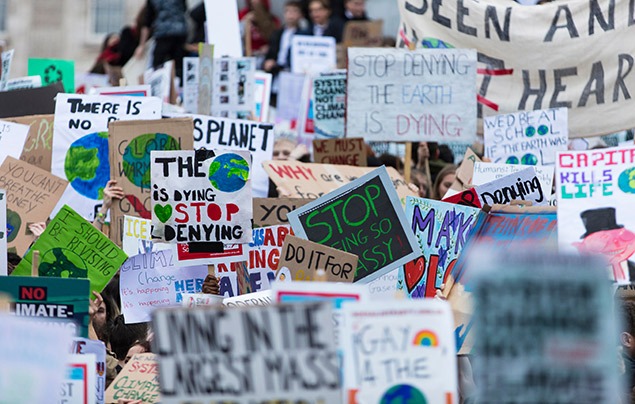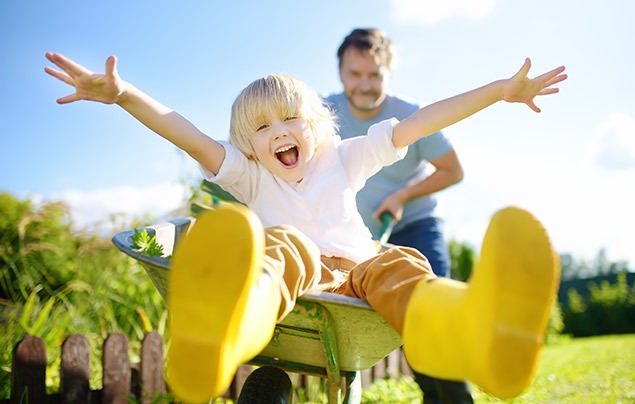How do you talk to kids when the news is scary?
It’s almost impossible to shield kids from terrible news. Here’s how to approach topics in an age-appropriate way – and help them feel safe.
When terrible tragedies happen on the news, it can be hard to know what to do. Many parents wonder how – and even if – they should bring up the topics with their children. So, we’ve asked the experts: how do you talk to kids when the news is scary?
Big news for young minds
Troubling current events can be upsetting and confusing to children. Although adults have the cognitive skills to process sudden news-making events like mass shootings, violent protests, plane crashes and natural disasters, a child’s brain usually isn’t developed enough to quite make sense of something that doesn’t seem right.
Psychologist David Rusbansan says that as children develop, they make sense of the world first through sight, then language, then through more complex connections between what they’ve learned.
“Their brain registers instinctual responses first: fear, surprise, and joy,” he says. It’s only as they get older that their brains can process more complex emotions.
Children also have difficulty understanding things that disrupt what they’ve come to understand as ‘normal’, says counselling psychologist Noelany Pelc. Being unsafe at school, police officers who behave unlawfully, planes falling out of the sky, or groups of people smashing windows in anger are things that break the rules of their world.
“When events threaten a child’s sense of normalcy, it can be upsetting,” Pelc says. “It’s a violation of the world they’re developing in their minds.”
Experts agree that while these conversations with children can be difficult, not having them could have long-ranging effects on how a child perceives and understands the world. Here’s how to talk to kids when the news is scary, making sure you address events that might be troubling them.
Broaching the topic
With 24-hour news, all-day social media and plenty of other chatter, it’s impossible to shield kids from terrible events. But experts recommend that before you jump into conversations, figure out what your youngest child knows and understands at this point.
“You might want to offer an introduction like, ‘I wonder if you’ve heard or seen x, y or z,” Pelc says. Tere Hernández-Acosta, an expert in education media, adds that this can also help parents know what a child might be misunderstanding as well.
If they’re not familiar with the event, Pelc says parents can still consider bringing up the subject, especially if the event has happened close to home or touches upon an important core value for your family.
“Open with, ‘Something important is happening in the world, and we’d like to talk to you about it,’ to kick-start the conversation,” she says.
But keep the conversations brief, allowing time for your child to process what they’ve heard and return to you with insights or questions. “The idea is that some of these conversations will unfold over several days, weeks or even months,” Pelc says.
How do you talk to kids when the news is scary?
Exactly how much detail you provide depends on the child’s age. We asked the experts for advice tailored to each general age group…
Young children aged less than 7
Hernández-Acosta says that children under seven aren’t developmentally capable of understanding the entire issue, and therefore have difficulty distinguishing reality from fantasy. That can cause confusion and a lack of perspective on the importance of events.
“When very young children see multiple video clips, even from different perspectives of the same event, it can appear like it’s recurring multiple times with different people,” Pelc says. For instance, she notes that some children who constantly watched 9/11 coverage believed that planes were crashing all over the US and hurting more people. “It can be traumatising.”
If young kids are aware of the event, they might not have questions but instead respond with fearfulness, a desire to stay close to caregivers, irritability, crying, or physical symptoms such as stomach aches. Pelc recommends using simple language while keeping up normal routines.
For instance, she recommends saying something like: “Someone went into a school and hurt some students and teachers. It is very sad. How are you feeling? How can I help?”
Primary-school-aged children
Primary-aged children (up to age 11) also need basic concepts but can understand more nuance. And they might be more likely to ask questions. These could be about motive (‘why?’), detailed events (‘how?’) and outcomes (‘what happened to them?’).
Pelc says parents of primary-aged kids could say something like: “You have a lot of great questions, and it can be scary and sad to know that someone has hurt and killed these children and teachers. And what I want you to know is that the adults of that school are working hard to answer those questions. How do you feel about what is happening?”
Secondary-school-aged children
Older, secondary-aged children (teenagers) are likely getting their information from outside sources like social media and their friends. So even though they might not reach out to parents to help them process, experts advise that Mum and Dad help them anyway.
“Sometimes children put together pieces of information they overhear,” Hernández-Acosta says. “Some of the information may be factual, and other pieces of information may be opinion-based. So it’s important to address what information they have first.”
Start by asking them what they’ve read, heard or seen. Hernández-Acosta also recommends asking how the event has made them feel, then showing empathy to validate those feelings, no matter what they are. And if the news turned out to be a misunderstanding? Here’s our guide to help kids understand (and challenge) fake news.
Helping your kids feel safe
Upsetting current events often bring out emotions in children related to a couple of different issues: fear for their own physical safety, and confusion when the ‘rules’ of their world – for instance, that schools are supposed to be safe or that certain buildings, countries or transport could never be attacked – are broken.
For instance, traumatic events like shootings, extreme weather events or a terrorist attack could make a child feel like something like that could happen to them. Pelc advises parents to provide messages that make children feel empowered and prepared. For instance, you could review or practise a safety plan, or discuss how parents are being kept safe at work.
But above all, reassure them that caregivers and other adults are there to keep them safe and provide support. “Really reinforce that their environment is safe, and adults are there to take care of them,” Pelc says.
Turbulent events that make children question what they’ve been taught about right and wrong can be more difficult to process. Pelc says parents should start by talking about emotions – both the child’s and the people involved in the event.
Hernández-Acosta advises that when discussing why people behaved the way they did, parents should help children consider various perspectives – just to make clear that feelings are not facts. Tell kids that without knowing a person’s background or experiences, it’s impossible to understand the motivation behind the behaviour.
Moving forward
Then, show kids how to use their own feelings to cope with an event. “Help them use their emotions to shift from a sense of helplessness to feeling like we could move toward change,” Pelc says. “Help them see that things like their own anger can signal an injustice or provide a catalyst for action.”
Empowering children to make a difference helps as well. Writing a card to people affected by the tragedy, reading about the underlying issues behind the event, or even joining a peaceful protest will help kids use their emotion to drive action – and that will help them cope.
“Help them identify the problem,” Hernández-Acosta says. “Then help them think about what they can do to get over that hump.”
For advice to help kids deal with other challenging topics, including eco-anxiety and cyberbullying, check out the rest of the Nat Geo Kids Parent Hub. Plus, sign up to our free newsletter for family-friendly activities, good news and helpful articles straight to your inbox.
Most children will eventually process these upsetting current events. But Pelc advises parents to be on the lookout for deeper signs of distress, like stomach aches, aggressive behaviour or isolation. If children seem especially sad or angry, Pelc recommends talking to the child’s school or a health professional.
Upsetting current events often come out of nowhere and leave parents little time to figure out how to help their kids deal. So, it’s okay to let them in on a little secret: you’re human, too.
“Parents feel like they have to have all the answers and know what to say,” Pelc says. “It’s okay to take a moment before we talk to our kids to figure out where we are and manage our own emotions first. Parents need support, too.”















LEAVE A COMMENT
THANK YOU
Your comment will be checked and approved shortly.
WELL DONE,
YOUR COMMENT
HAS BEEN ADDED!
COMMENTS
CUSTOMIZE YOUR AVATAR